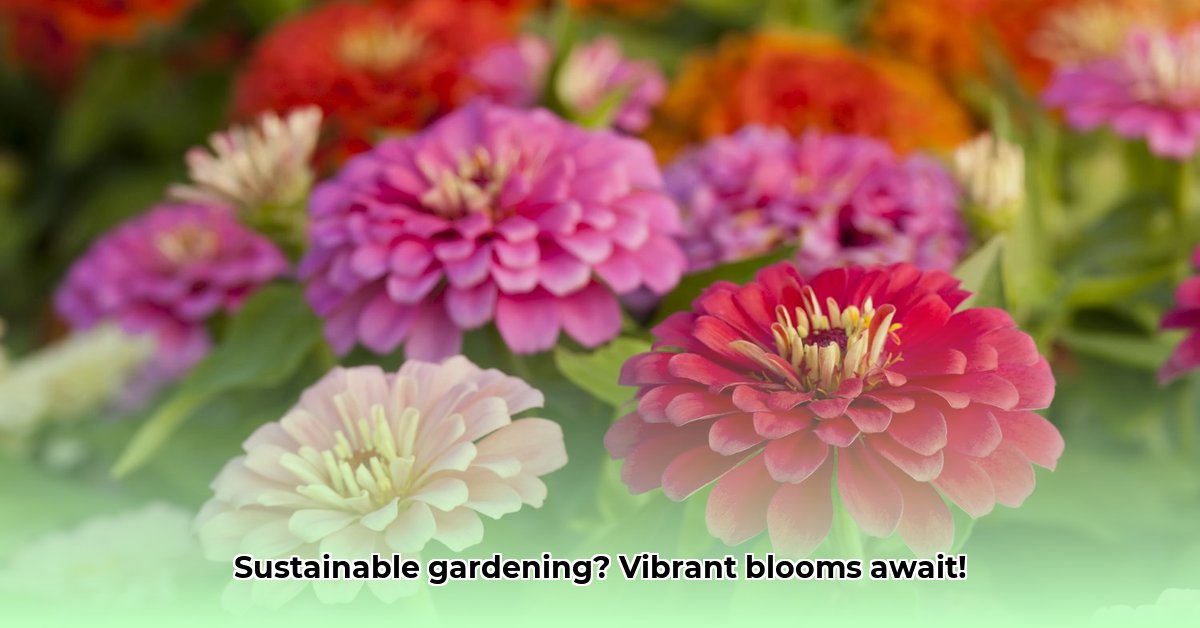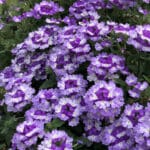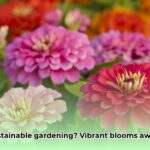Cultivating a vibrant annual garden can be both beautiful and environmentally responsible. This guide offers practical, sustainable strategies to maximize your blooms while minimizing your impact. For even more beautiful blooms, check out these baby blue eyes.
Choosing Eco-Conscious Annuals
Selecting the right plants sets the stage for a thriving, sustainable garden. Opt for varieties suited to your local climate and consider these beneficial traits:
- Drought Tolerance: Reduce water consumption with resilient beauties like zinnias, cosmos, and portulaca. These champions thrive in drier conditions, conserving precious water resources.
- Natural Pest Resistance: Marigolds and nasturtiums act as natural deterrents, minimizing the need for pesticides and promoting a balanced garden ecosystem.
- Pollinator Attraction: Support local biodiversity by planting pollinator magnets such as sunflowers, coneflowers, and borage. These plants provide vital food sources for bees, butterflies, and other essential pollinators.
- Low-Maintenance Growth: Simplify your gardening routine with easy-to-grow options like petunias, salvia, and sweet alyssum. These varieties require minimal intervention, flourishing with basic care.
Consult your local nursery for expert advice on the best annuals for your specific region, ensuring a successful and sustainable garden.
Water-Wise Practices for a Thriving Garden
Efficient watering is crucial for sustainable gardening. Maximize every drop with these techniques:
- Soil Preparation: Amend your soil with compost to improve drainage and water retention, reducing the need for frequent watering and creating a healthy foundation for your plants.
- Mulching: Apply a layer of organic mulch, such as straw, wood chips, or shredded leaves, to conserve moisture, suppress weeds, and regulate soil temperature, creating a nurturing environment.
- Targeted Watering: Employ deep, infrequent watering to encourage robust root growth. Water in the early morning to minimize evaporation and consider using drip irrigation or soaker hoses for precise water delivery directly to the roots.
Natural Pest Control: Harmony in the Garden
Embrace Integrated Pest Management (IPM) for a holistic approach to pest control:
- Companion Planting: Strategically combine plants to deter pests naturally. For example, basil repels aphids, while marigolds discourage nematodes, creating a harmonious balance in your garden.
- Beneficial Insects: Attract beneficial insects like ladybugs and lacewings, which prey on common garden pests. Provide food sources and habitats to encourage their presence and foster a natural pest control system.
- Organic Sprays: Utilize homemade, organic solutions like diluted insecticidal soap or neem oil for effective pest control without harming beneficial insects or the environment.
Soil Enrichment: The Foundation of Plant Health
Healthy soil is the bedrock of a flourishing garden. Implement these strategies to nourish your soil:
- Soil Testing: Conduct a soil test to analyze pH levels and nutrient content. This valuable information guides your soil amendment strategy, ensuring optimal nutrient availability for your plants.
- Composting: Transform kitchen scraps and yard waste into nutrient-rich compost. This sustainable practice reduces waste while enriching your garden soil with valuable organic matter.
- Organic Fertilizers: Opt for slow-release organic fertilizers over synthetic alternatives to provide sustained nourishment without harming beneficial soil organisms, promoting a healthy and balanced soil ecosystem.
End-of-Season Practices: The Sustainable Cycle
Sustainable gardening extends beyond the growing season. Complete the cycle with these practices:
- Composting: Compost spent annuals to return valuable nutrients to the soil, minimizing waste and preparing for the next growing season, creating a closed-loop system.
- Seed Saving: Collect and save seeds from your favorite annuals to foster self-sufficiency and reduce reliance on commercially produced seeds. Allow seed heads to dry thoroughly on the plant, then harvest, clean, and store them in a cool, dry location for future use.
By integrating these sustainable practices, you can create a breathtaking annual garden that thrives in harmony with nature. Every step, no matter how small, contributes to a healthier planet and a more vibrant garden.
- China II Review: Delicious Food & Speedy Service - April 17, 2025
- Understand Virginia’s Flag: History & Debate - April 17, 2025
- Explore Long Island’s Map: Unique Regions & Insights - April 17, 2025
















